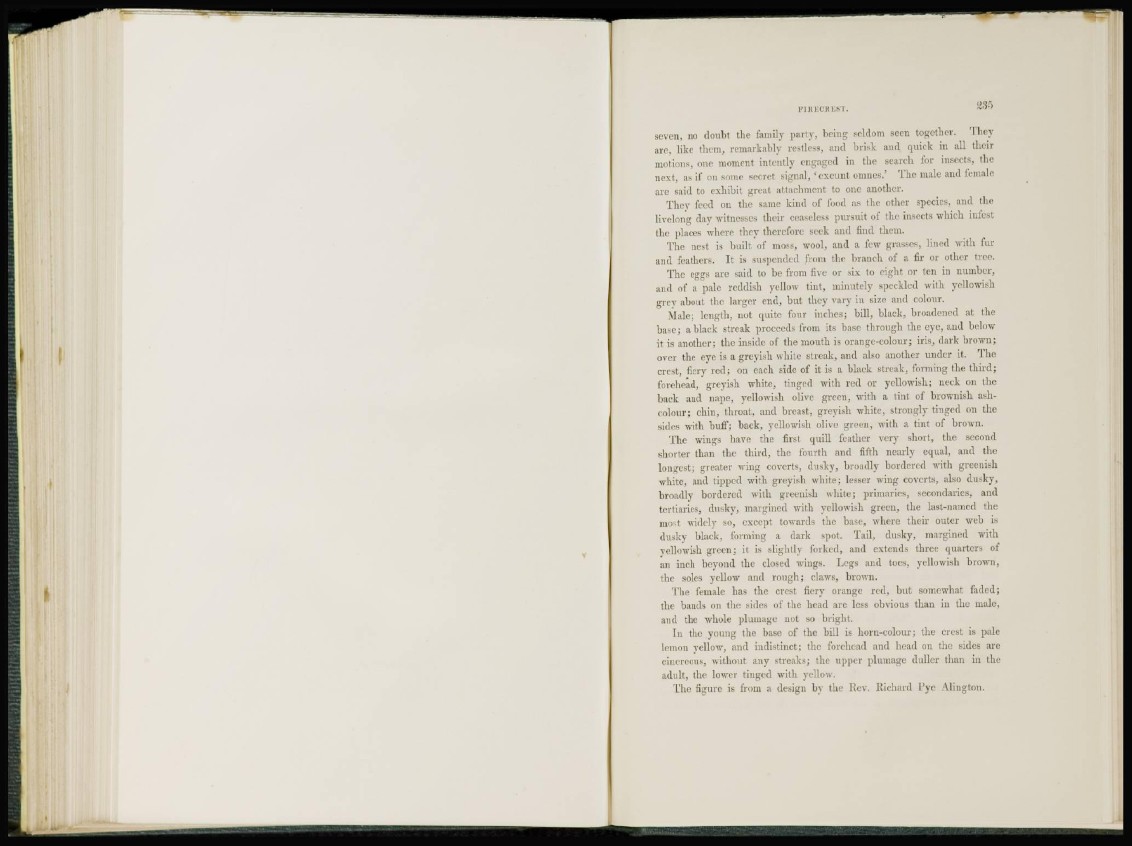
FIHECB EST. 285
seven, no doubt the family party, being seldom seen together. They
are, like them, remarkably restless, and brisk and quick in all their
motions, one moment intently engaged in the search for insects, the
next, as if on some secret signal, 'exeunt omues.' The male and female
are said to exhibit great attachment to one another.
They feed on the same kind of fond as the other species, and the
livelong day witnesses their ceaseless pursuit of the insects which infest
the places where they therefore seek and find them.
The nest is built of moss, wool, and a few grasses, lined with fur
and feathers. It is suspended from the branch of a fir or other tree.
The eggs are said to be from five or six to eight or ten in number,
and of a pale reddish yellow tint, minutely speckled with yellowish
grev about the larger end, but they vary in size and colour.
Male; length, not quite four inches; bill, black, broadened at the
base; a black streak proceeds from its base through the eye, and below
it is another; the inside of the mouth is orange-colour; iris, dark brown;
over the eye is a greyish white streak, and also another under it. The
crest, fiery red; on each side of it is a black streak, forming the third;
forehead, greyish white, tinged with red or yellowish; neck on the
back and nape, yellowish olive green, with a tint of brownish ashcolour;
chili, throat, and breast, greyish white, strongly tinged on the
sides with buff; back, yellowish olive green, with a tint of brown.
The wings have the first quill feather very short, the second
shorter than the third, the fourth and fifth nearly equal, and the
longest; greater wing coverts, dusky, broadly bordered with greenish
white, and tipped with greyish white; lesser wing coverts, also dusky,
broadly bordered with greenish white; primaries, secondaries, and
tertiarics, dusky, margined with yellowish green, the last-named the
most widely so, except towards the base, where their outer web is
dusky black, forming a dark spot. Tail, dusky, margined with
yellowish green; it is slightly forked, and extends three quarters of
an inch beyond the closed wings. Legs and toes, yellowish brown,
the soles yellow and rough; claws, brown.
The female has the crest fiery orange red, but somewhat faded;
the bands on the sides of the head are less obvious than in the male,
and the whole plumage not so bright.
I n the young the base of the bill is horn-colour; the crest is pale
lemon yellow, and indistinct; the forehead and head on the sides are
cinereous, without any streaks; the upper plumage duller than in the
adult, the lower tinged with yellow.
The figure is from a design by the Rev. Richard Pye Alington.